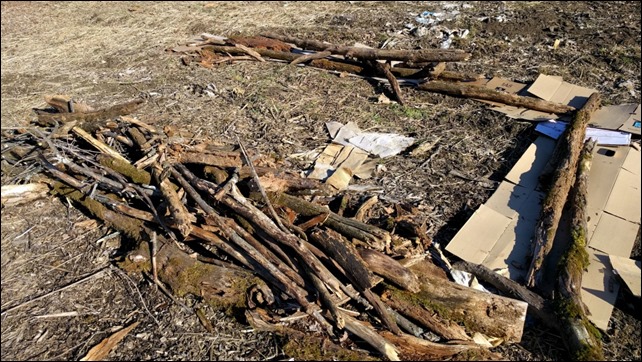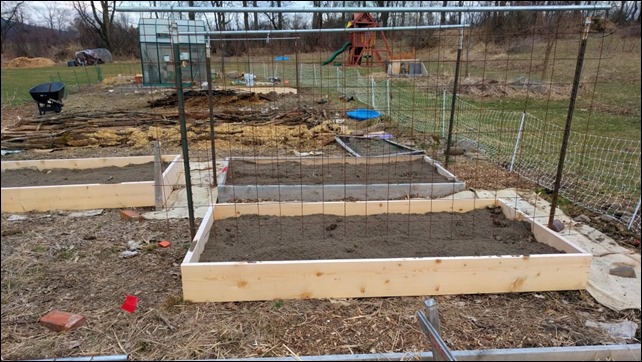As I mentioned in my last post, we are transitioning much of our gardens to raised beds and hugelcultur. We are currently building our hugelcultur mounds, so I thought it might be interesting to show the progression.
We usually try to start with cardboard. If you are building on top of grass, you will probably want to build a trench first. We start with larger partially-rotted logs from our woods. You can also use freshly cut logs or a mix. Just depends what you want.
By using partially rotted logs, we’ll get things rolling a bit faster and we won’t need as much nitrogen to break things down. Plus the logs should already have lots of good fungal and other micro-organism stuff going on. The down side is the lifespan of the mound will be shorter as everything will break down more quickly.
After the bigger base logs are in place, we add smaller branches, twigs, leaves and other stuff we can grab from the woods. We’re also growing to throw any organic material we can find on top. This might be shavings/manure from our coops, wood chips, compost, hay or straw, some of the well-rotted cow manure we got from our neighbor and so on.
You basically want to saturate all of this stuff with water. One way is to use a soaker hose, particularly if you don’t want to stand there watering by hand for minutes at a time.
Or you can take advantage of the rain as you build as we are doing today. Just depends how fast you are putting one of these together.
Once we’ve piled up all the material, you cover the whole thing with soil and you can plant stuff right away. It’s better if you build this a year in advance or maybe the previous fall. But you get some benefit even the first year.
Subsequent years should just get better and you can continue to add more organic material to the top of the mound each spring.
As far as our raised beds, here is one of those in progress. Our basic plan is cardboard at the bottom, then a layer of wood chips, preferably some manure or other rich nitrogen source and then soil on top. I’m curious to see how well this works. May have to play around with nitrogen levels the first year. I started a few of these last fall with just the chips and manure and I’m already seeing some nice breakdown this spring.
Here are a couple more ready to plant, with our trellis system installed over the bed.








